
The 4th International Conference on Electronics, Communications and Networks
Dec.12th-15th,2014 Beijing,China



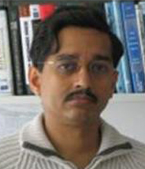 |
Prof. Vijaykrishnan Narayanan Fellow of IEEE Pennsylvania State University Dept. of Computer Science and Engineering University Park, PA 16802, USA |
Keynote Speech Title: Embedded Vision Systems Abstract: This talk will present challenges and opportunities in the design of embedded vision systems. A confluence of concurrent advances in algorithms, architectures and technology promises new kinds of vision system architectures with cognitive vision capabilities. This talk will discuss the design of such cognitive systems and their use in various applications. | |
 |
Prof. Minho Jo Dept. of Computer and Information Science Korea University Sejong City 330-700, South Korea |
Keynote Speech Title: Selfish Attacks and Detection in Cognitive Radio Abstract: Cognitive radio is an opportunistic communication technology designed to help unlicensed users utilize the maximum available licensed bandwidth. Cognitive radio has recently attracted a lot of research interest. However, little research has been done regarding security in cognitive radio, while much more research has been done on spectrum sensing and allocation problems. A selfish cognitive radio node can occupy all or part of the resources of multiple channels, prohibiting other cognitive radio nodes from accessing these resources. Selfish cognitive radio attacks cause a serious performance degradation problem by not allowing other secondary users to use available licsensed spectrum. In this keynote speech, he will adress selfish attack types in cognitive radio ad-hoc networks and will introduce selfish cognitive radio attack detection techniques. In addition, several future research topics in the area will be presented. | |
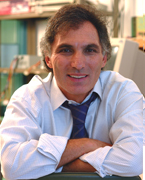 | Prof. Borko Furht Professor and Director of NSF Industry/University Cooperative Research Center For Advanced Knowledge Enablement Florida Atlantic University, USA |
Keynote Speech Title: Industry/University Collaboration in Creating Advanced Multimedia Systems and Tools Abstract: In this talk we will first introduce the NSF-sponsored Industry/University Cooperative Center for Advanced Knowledge Enablement at FAU, which presently has 29 industry members with about $4.5 million memberships. The Center is successfully building a bridge linking academia, industry, and government in a coordinated research initiative. We describe several applied multimedia research projects conducted within the Center including video and image mining for coastline security, 3D image reconstruction and segmentation of brain cells, augmented reality methods for hearing augmentation, automatic asset management in data centers, driver drowsiness detection system using image processing, and a few others. All these projects are initiated by industry partners who are the members of the Center and who are interested to use the obtained research results and create successful commercial products. The talk will complete with our prediction where the multimedia computing is heading in the next several years. | |
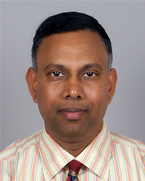 | Prof. Nurul I. Sarkar Auckland University of Technology Auckland, New Zealand |
Keynote Speech Title: Recent Development and Research Activities in Wireless Networks Abstract: There has been a tremendous growth in the deployment of IEEE 802.11 (a/b/g/n/ac) based wireless local area networks (WLANs) in recent years. This growth is due to the flexibility, low cost, simplicity, and user mobility offered by the technology. Such networks are being deployed widely in homes, offices, schools, shops, hotels, warehouses, factories, and almost anywhere that people live and work. This talk will highlight some of the most recent developments and ongoing research activities in emerging wireless network technologies. Network performance issues and challenges in protocol resign will be discussed. Empirical results will be presented to support discussion. This is a knowledge sharing talk suitable for a general audience. | |
 | Prof. Avigdor Gal Faculty of Industrial Engineering & Management Technion — Israel Institute of Technology Technion City, Haifa 32000, Israel |
Keynote Speech Title: Big Data Integration Abstract: Integration of data has been the focus of research for many years now. At the metadata level, schema matching and mapping and ontology matching and alignment identify ontological relationships between structured data descriptions (such as attributes, classes, etc.). At the data level, entity resolution (also known as record deduplication) aims at ``cleaning'' a database by identifying tuples that represent the same entity. The need for data integration stems from the heterogeneity of data (arriving from multiple sources), the lack of sufficient semantics to fully understand the meaning of data, and errors that may stem from incorrect data insertion and modifications (e.g., typos and eliminations). With a body of research that spans over multiple decades, data integration has a wealth of formal models of integration, algorithmic solutions for efficient and effective integration, and a body of systems, benchmarks and competitions that allow comparative empirical analysis of integration solutions. The evolution of data accumulation, management, analytics, and visualization has recently led to coining the term big data. Big data encompasses technological advancement such as Internet of things (accumulation), cloud computing (management), and data mining (analytics), packaging it all together while providing an exciting arena for new and challenging research agenda. In the light of these landscape changes we analyze in this talk the impact of big data on data integration. In particular, the talk will present advancement in automatic tools for data integration and the changing role of human experts. | |
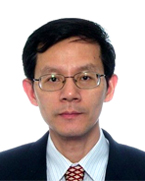 | Dr. Kevin Deng Automotive Research Institute Jilin University Changchun, China |
Keynote Speech Title: Drive Vehicle Intelligence with Virtual Driving Abstract: Vehicle intelligence has become critically important in coping with the challenges in vehicle fatality and traffic jam faced by automotive industry worldwide. Unlike traditional vehicle development which has been mainly based upon intensive field testing, the development of vehicle intelligence is greatly influenced by its driving environment, which has posed great difficulties due to its large variation, uncertainty and complexity under various driving scenarios and weather conditions. This talk will present some latest research on tools and method of virtual driving environment aimed to enable high-fidelity design, test and verification of vehicle intelligence. The proposed virtual driving environment includes vehicle models and models of traffic, road and environment sensors such as radar, camera and wireless communication, and a 3D virtual testing field or digital proving ground. Both non real-time and real-time simulation with hardware- and driver- in-the-loop (HIL/DIL) simulation will also be discussed. | |
 | Prof. Oleg Burdakov Division of Optimization Department of Mathematics Linkoping University Linkoping, Sweden |
Keynote Speech Title: New network optimization techniques for positioning unmanned aerial vehicles as communication relays for surveillance tasks Abstract: Many applications for unmanned aerial vehicles (UAVs) are related to surveillance of distant targets, including search and rescue operations, traffic surveillance and forest fire monitoring as well as law enforcement applications. The sensor information gathered must safely be transmitted continuously from a set of surveillance UAVs to a base station via a set of relay UAVs. In many cases, high uninterrupted bandwidth requires line-of-sight between sender and transmitter to minimize quality degradation. Communication range is typically limited, especially when smaller UAVs are used. To accomplish these ends, relay chains for surveillance of a single target, and relay trees for simultaneous surveillance of multiple targets are created. The spatial placement of these UAVs should take into account the local terrain as well as the location of the base station and targets. The surveillance and communication quality of the placement is to be optimised. We show how to reduce these one- and multi-target problems to network optimization problems characterized by a very large number of nodes and arcs. We also present new algorithms developed for effectively solving such problems. | |
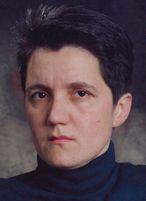 | Prof. Mirjana Ivanovic University of Novi Sad Faculty of Sciences Novi Sad, Serbia |
Keynote Speech Title: Modern Machine Learning Techniques and Their Applications Abstract: During the last several decades machine learning (ML) has become one of the mainstays of information technology and an unavoidable ingredient of contemporary research in a wide range of domains. One significant view on machine learning is that it represents the modern science of finding patterns and making predictions from large amounts of data, with the goal of creating systems that learn from experience. The field of machine learning borders closely with multivariate statistics, data mining, pattern recognition, and advanced/predictive analytics. Increasing amounts of data available in different areas of human endeavor is good reason to believe that machine learning and other fields concerned with intelligent data analysis will become even more pervasive as a necessary component for technological progress. The success of machine learning depends on variety of algorithms and techniques that usually belong to one of the main learning styles: supervised, unsupervised, semi-supervised, and reinforcement learning. Relevant techniques include decision tree learning, nearest neighbor methods, partitional/hierarchical/density-based clustering, Bayesian approaches, kernel methods, neural networks and deep learning. The first part of our presentation will be devoted to a brief overview of most important and frequently used ML techniques and algorithms. We will also outline the common problems learning algorithms face that can hinder performance: the bias-variance tradeoff, under/over-fitting, and high dimensionality of data. In the second part of the presentation we will highlight some of the most recent applications of ML in different areas like: networking, telecommunications, medicine and business. | |
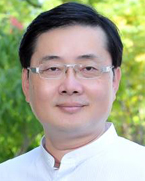 | Prof. Han-Chieh Chao President National Ilan University, Taiwan, China |
Keynote Speech Title: Towards 5G Mobile Communication Technology Abstract: The third generation (3G) and fourth generation (4G) of mobile phone mobile communication technology have been widely used and launched in the world. Since the infrastructures like Base Stations (BS) and Evolved Node B (eNBs) are deployed everywhere, efficiency is a vital issue for the fifth generation (5G). However, 5G mobile communication is still just being set up. Some technologies and research issues are announced and investigated. This keynote speech introduces the expectative performance goals of 5G. Then, some potential technologies for 5G cellular mobile communications are discussed, such as Millimeter Wave Communication (mmWave), Non-orthogonal Multiple Access (NOMA), Massive MIMO, Cloud Radio Access Network (C-RAN), Heterogeneous Network (HetNet), and so on. Finally, some tentative 5G scenarios are shown and our blueprint for HetNet in 5G is also given. | |
 |
David G. Stork Rambus Fellow Rambus Labs |
Keynote Speech Title: Joint design of optics and signal processing: New design principles in computational imaging for the Internet of Things Abstract: The discipline of computational imaging involves the design of both the optics and the digital signal processing to achieve a desired digital output. The electro-optical system is hence best viewed as an information channel rather than a traditional optical imaging system. Because the intermediate optical image need not “look good,” there is great freedom in the design of the optics—which can be made smaller and cheaper than in “equivalent” systems designed in traditional ways. The burden of digital image creation is thus shifted toward the digital domain, which continues to reduce in cost according to Moore’s Law. Some examples of these new design principles will be presented. | |
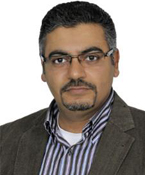 |
Prof. Yehea Ismail Director of the Nanoelectronics and Devices Center American University Egypt |
Keynote Speech Title: Many-Core Chips: The New High-Performance Computing Platform New design principles in computational imaging for the Internet of Things Abstract: Sacling as we know it is taking a different direction from the last three decades. Chips with tens of billions of transistors and hundreds of cores are expected to be the future of scaling. These chips will achieve performance through parallelism and application specific optimized cores. This trend will use superior technologies to integrate more cores on a chip rather than to push the frequency envelope as in the past. It is expected that every aspect of design and analysis will need to be modified to accommodate this new platform and trend. There is a clear need for new CAD tools and design methodologies that are very different from existing tools in both their focus and scope. This talk will delve into the specific challenges with respect to both design and CAD that is required for these many core chips. The talk will also provide an overview into the market and technology factors guiding and driving this trend. Attendees will be provided with insight into both present and future research vectors to support this nascent exponential. | |
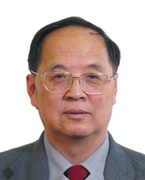 |
Prof. Daoben Li Beijing Univ. of Posts and Telecomm. Beijing, China |
Keynote Speech Title: A Novel High Spectral Efficiency Waveform Coding –OVFDM Abstract: Based on the Overlapped Multiplexing Principle, a frequency domain OVFDM (Overlapped Frequency Domain Multiplexing) Coding is proposed. By the data weighted shift overlapped version of any band-limited Multiplexing Transfer Function the coding gain and spectral efficiency are both achieved. The heavier the overlap of the data weighted Multiplexing Transfer Function , the higher the coding gain and spectral efficiency as well as the closer the output to the optimum complex Gaussian distribution. The bit error probability performance is estimated. That shows OVFDM is suitable for high spectral efficiency application and its spectral efficiency is only roughly proportional to SNR. | |
 |
Prof. Suk-Hwan Suh Professor and Director of Center for Ubiquitous Manufacturing. Founding Dean of Graduate School of Engineering Mastership President of Korean Society of Systems Engineering POSTECH, Korea |
Keynote Speech Title: A new paradigm and enabling technologies for product design, manufacturing, and recycling via ubiquitous computing technology Abstract: Since ubiquitous technology was introduced in the early 1980s, it has rapidly developed, and been applied to various domains mainly for the improvement of human life. In this talk, we propose that ubiquitous computing technology can be effectively used for the design and manufacturing of a product by proposing a new paradigm, called UbiDMR (Design and Manufacture via Ubiquitous Computing Technology). The key aspect of UbiDMR is the utilization of the entire product lifecycle information obtained via ubiquitous computing technology for the design, manufacture, and recycling of the product. The new paradigm can solve many of the problems that have not been properly handled by previous manufacturing paradigms. In the first part, we will address the concept of UbiDMR by the following aspects: 1) why there is a need for UbiDMR, 2) the essence of UbiDMR, 3) enabling technologies, 4) application area, 5) worldwide R&D status, and 6) the societal impacts of UbiDMR. In the second part, enabling technologies for UbiDMR including: 1) Information infrastructure (UPLI: Ubiquitous Product Lifecycle Information), 2) Factory architecture (u-Factory), 3) Product recovery management system (u-PRMS), and 4) Computer Aided Ubiquitous Systems Engineering (CAUSE). | |
